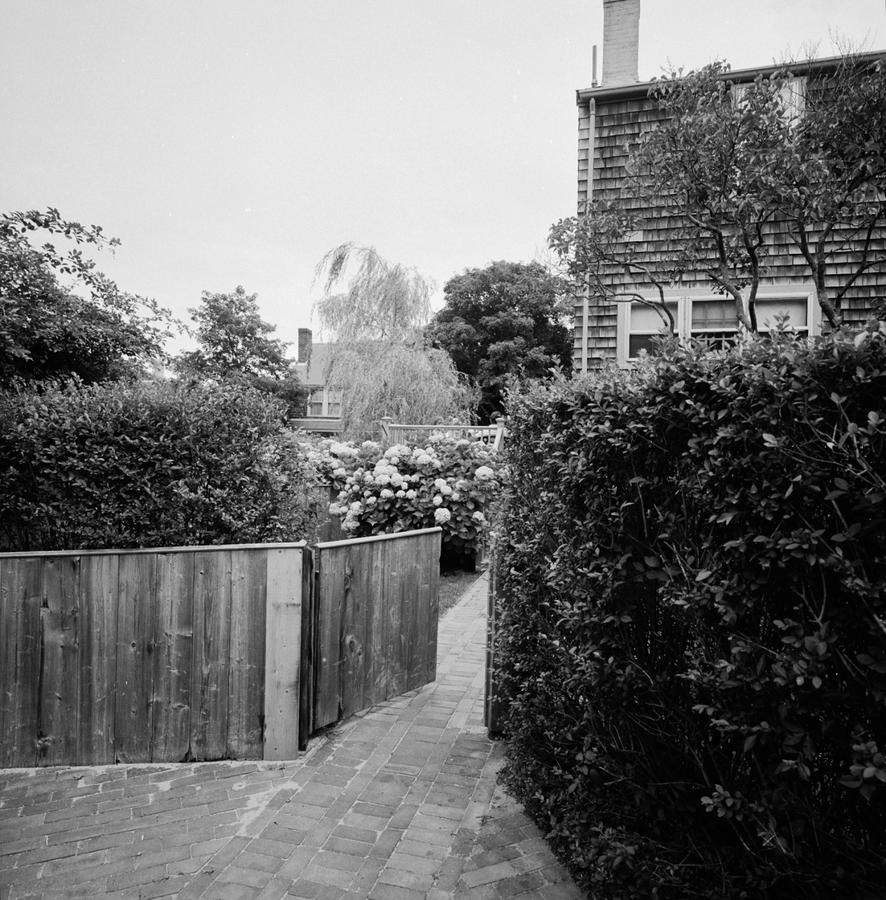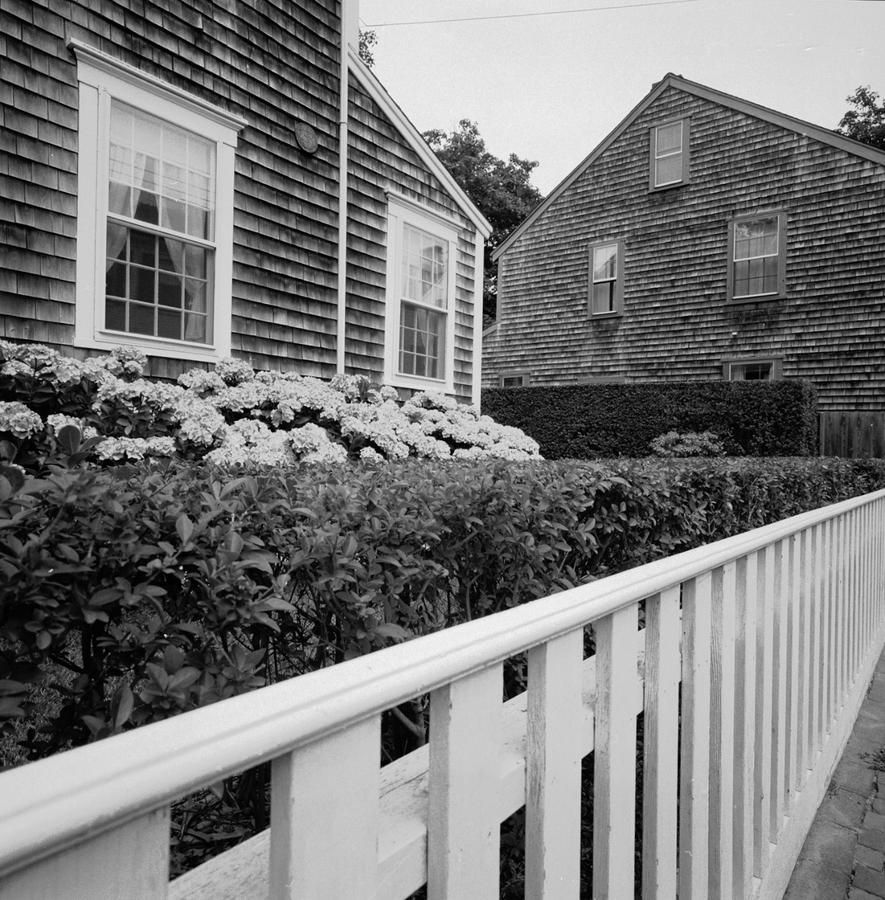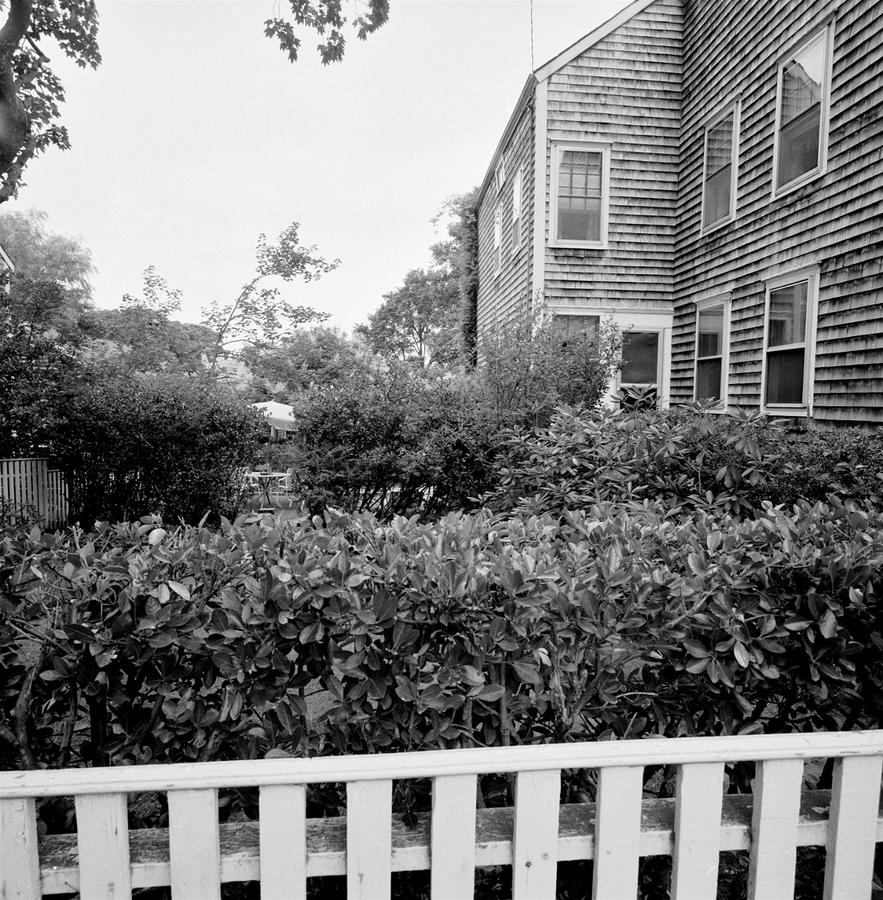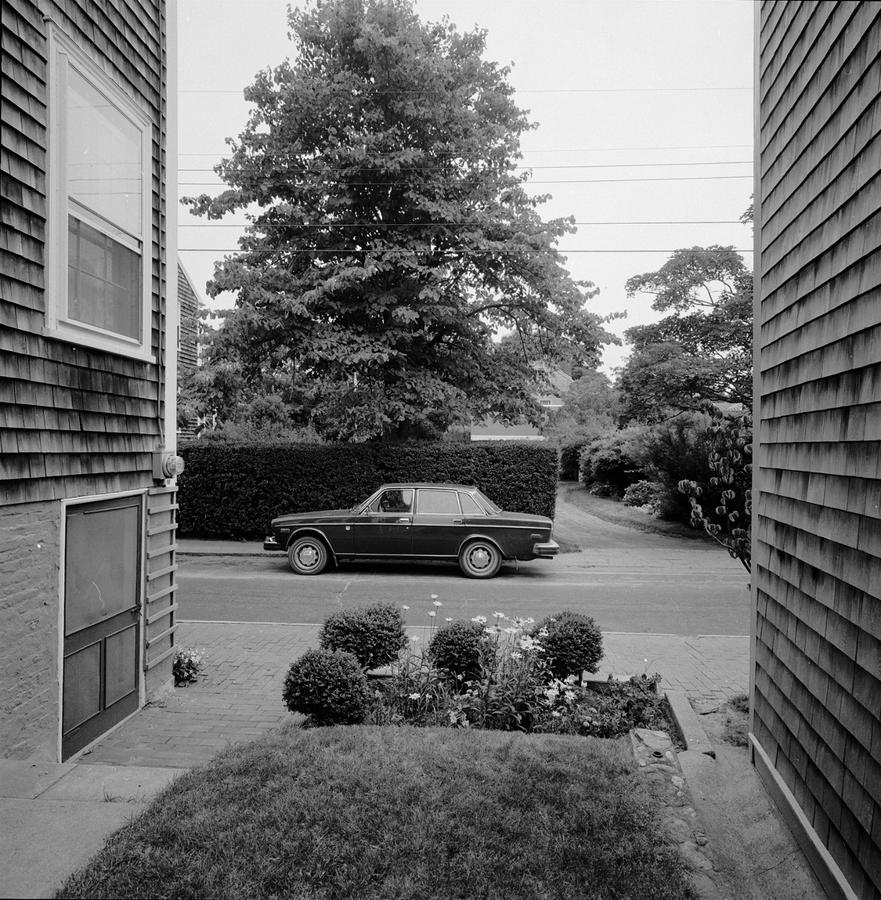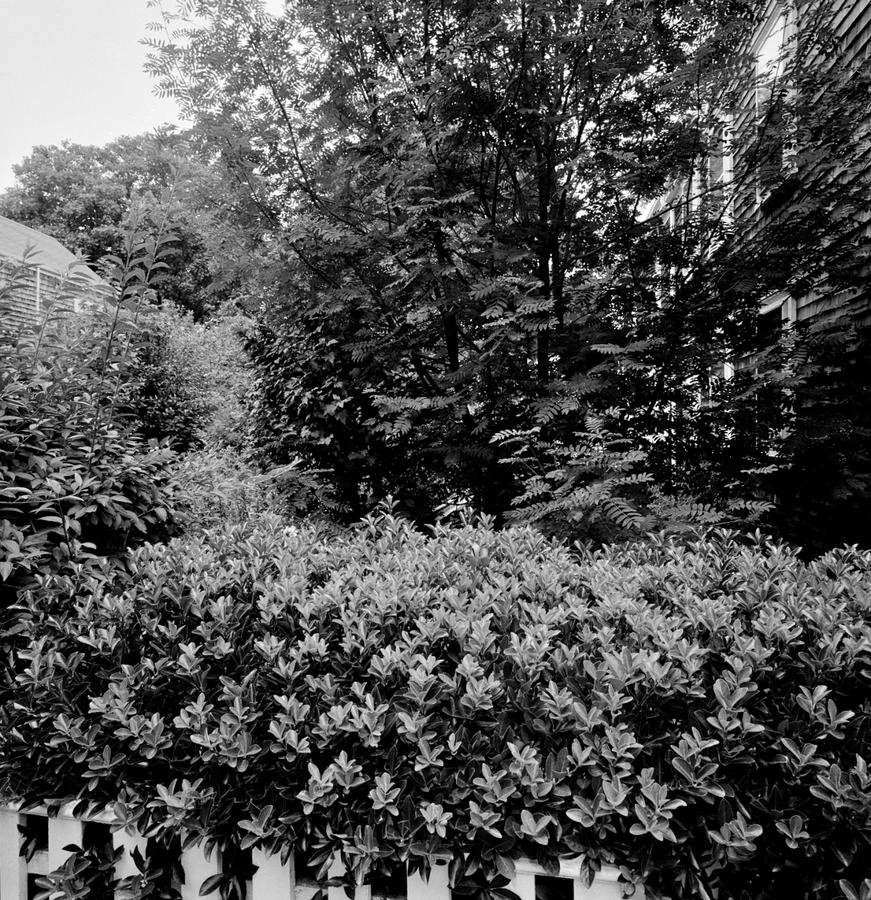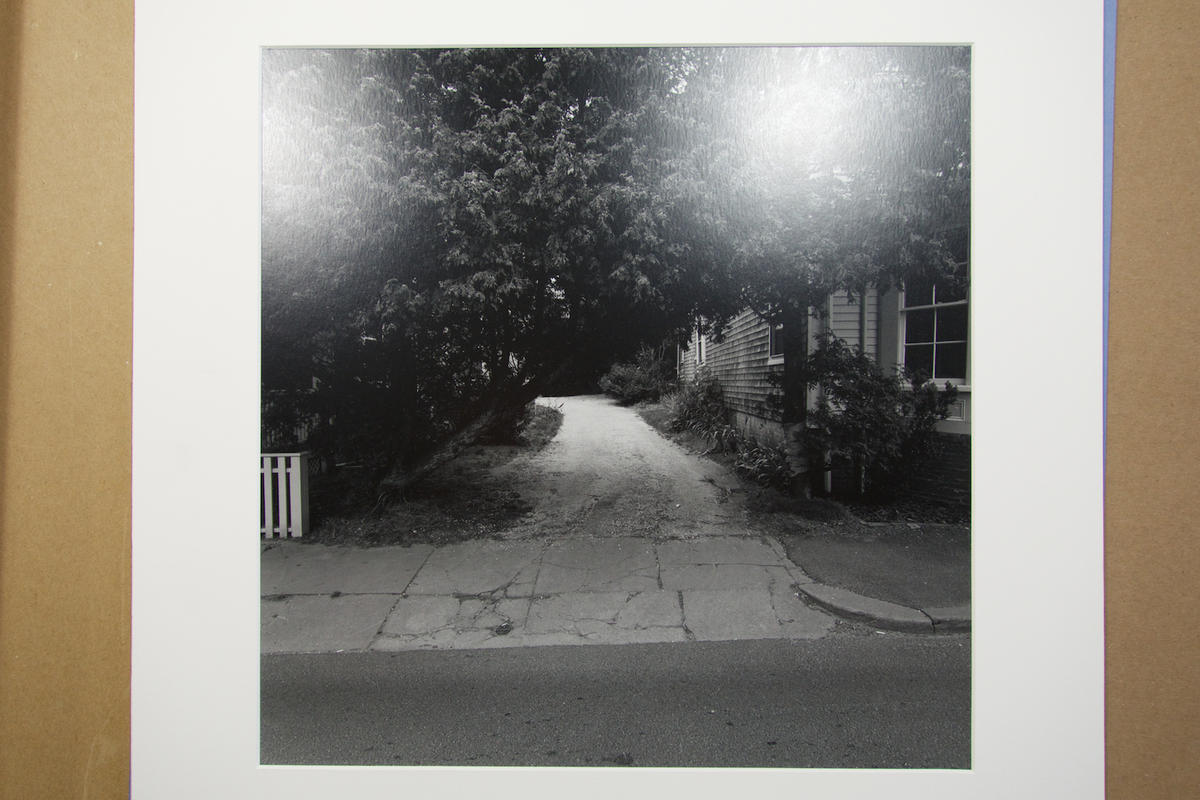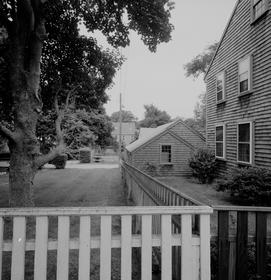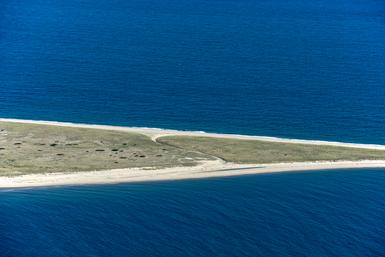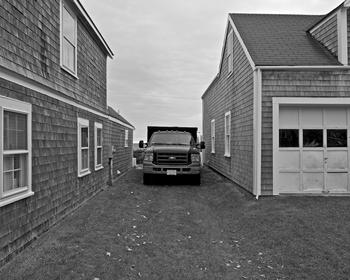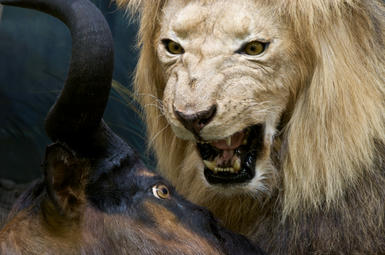Nantucket
This is big. This time we will look at the body of work that started me working in series, one of the ways I continue to make photographs today. Note the date: 1980. Nantucket is the first real series I ever made. I am going to devote some time to it here as I look forward to reliving it (and testing if I remember it well) and, although the work looks surprisingly modest today to me and most likely to you, it is a seminal body of work in my career's output and very important as such.
Here we go.
Let me place the series in context. It is 1980, I am teaching at Harvard, have stopped teaching at the New England School of Photography in Boston and will begin teaching at Northeastern University by 1981. I am single but not for long as I will meet my wife to be in a few months. By this time I have been teaching for a summer or two at Martha's Vineyard in something called the Chilmark Photography Workshops, started by Carol Lazar. In the summer of 1980, I am running the workshop, handling logistics, working with a TA, lecturing, presenting others' work with slide shows and am teaching shooting, camera controls, darkroom and heading the class towards a final project in a three-week workshop. I think I had about 15 students. Field trips were frequent but, by the time we're starting our third week, we were all a little burnt out on shooting on Martha's Vineyard. Islands have their limitations. I found that there was an early morning ferry that would take us from the Vineyard to Nantucket, leave us there for the day and return us to the Vineyard by early evening. We decided to go.
We arrived in Oak Bluffs where we would catch the boat for Nantucket in the early morning in mid-July and it was hot, the air was stagnant and there was thick fog. I made a few pictures in the fog while we waited to board.
 Fog is so wonderfully dislocating and this one of the three boys fishing on the ferry pier has been shown frequently over the years. To me it seems from a different era, clearly coming from a sensibility different than todays. It looks optimistically at the mystery of our world with a sense of wonder and is quite naive, I believe. I am far too jaded to make a picture like this now. By the time we're on the boat, the fog is beginning to burn off. Over an hour later we get to Nantucket and disembark. We mill around for a little bit, then I pull the group together to tell them we are here to photograph, give them a couple of things to work on and set them free, asking them to be back at the boat for the return trip late in the afternoon. Off they go and so do I, with no real thought in my mind as to what I will do. It is hot, the kind of day where you don't really know the direction of the light as it is bright but flat, your shirt sticking to your back and where you'd prefer to be sipping something cool under a tree or maybe be in the ocean riding the waves. I had a pouch on my belt with several rolls of 120mm Kodak's Tri-x and Plus-x film in it, a Hasselblad Superwide in my hand, a Pentax Spotmeter hanging around my neck and a baseball cap on my increasingly bald head. I was 34 years old.
Fog is so wonderfully dislocating and this one of the three boys fishing on the ferry pier has been shown frequently over the years. To me it seems from a different era, clearly coming from a sensibility different than todays. It looks optimistically at the mystery of our world with a sense of wonder and is quite naive, I believe. I am far too jaded to make a picture like this now. By the time we're on the boat, the fog is beginning to burn off. Over an hour later we get to Nantucket and disembark. We mill around for a little bit, then I pull the group together to tell them we are here to photograph, give them a couple of things to work on and set them free, asking them to be back at the boat for the return trip late in the afternoon. Off they go and so do I, with no real thought in my mind as to what I will do. It is hot, the kind of day where you don't really know the direction of the light as it is bright but flat, your shirt sticking to your back and where you'd prefer to be sipping something cool under a tree or maybe be in the ocean riding the waves. I had a pouch on my belt with several rolls of 120mm Kodak's Tri-x and Plus-x film in it, a Hasselblad Superwide in my hand, a Pentax Spotmeter hanging around my neck and a baseball cap on my increasingly bald head. I was 34 years old.
I started to wander around the town, avoiding the main street as it was far too touristy for me. Soon I found myself walking along back streets. It was quiet with an occasional car and few people. I began to see things that looked interesting to photograph. If I go back through the rolls I shot that day 33 years ago I can see a few frames at the start where I was beginning to form an idea about pictures existing next to pictures. I made this one:

Such a benign looking picture now, but this actually shook my world in a fundamental way back then. Why? What did I care about? The accelerated space of that fence pulling back in the frame, the bifurcated image, sliced in two with the railing receding fast, the triangles of the roofs stacked on top of each other in the mid background, the planal quality of the house with windows on the right compared to the straight-on house in the far background, which is parallel to the foreground fence, the tree on the left with its rough texture, knotted and looking like warts with branches heavy with leaves hanging down into the sky in the center of the frame. This soft flat light so perfect for this work with almost no shadows elevates this picture to the wonderful combination of the outright banal and the supremely sublime at the same time. As far as photographic aspirations go this one hit it out of the park for me.
What freaks me out now so long after is that I knew it. This picture and the next couple got my attention, made me wake up and stay focused and, as has happened so many times since, I found myself saying to myself, "Neal, do not blow this." I didn't. I got serious, stayed on track, held the camera steady and proceeded to go to work. In fact, I had a little help. I was in familiar territory. A couple of years before I had completed a two-year project called "Fences and Walls" which was of fences and walls (no big surprise) but also dealt with depth, foreground to background relationships and layering. Of course, you never know whether something you've done will provide support for what you are doing now but you hope so. This was one of those times.
 This one, the second in the series, establishes that I am looking in between the homes and also that the angle of view is extreme. Much of this work addresses the photographic seeing involved, the character, which is unique, of the optic and the special and spacial relationships that are formed by the way the lens sees these domestic scenes. By standing on a wall across the street I was able to diminish the street and put the back of the truck in the lower left of the frame while keeping the verticals essentially straight and parallel. I am referring, of course, to convergence, what a lens does when pointed up. Odd that this is so easily corrected now with software. Software? I had no idea any of that was coming when I made these pictures. Finally, there is a strong connection from this picture to the previous one. The centering prevails in both but this one centers in negative space as opposed to positive space. We will see this same thing repeating throughout the series.
This one, the second in the series, establishes that I am looking in between the homes and also that the angle of view is extreme. Much of this work addresses the photographic seeing involved, the character, which is unique, of the optic and the special and spacial relationships that are formed by the way the lens sees these domestic scenes. By standing on a wall across the street I was able to diminish the street and put the back of the truck in the lower left of the frame while keeping the verticals essentially straight and parallel. I am referring, of course, to convergence, what a lens does when pointed up. Odd that this is so easily corrected now with software. Software? I had no idea any of that was coming when I made these pictures. Finally, there is a strong connection from this picture to the previous one. The centering prevails in both but this one centers in negative space as opposed to positive space. We will see this same thing repeating throughout the series.
The third in the Nantucket series moves in far tighter but maintains the sense that we are looking down an alley created by two buildings.
 It is a study in grays and is an acutely flattened tonal scale. I made very flat and gray negatives by overexposing the film and then underdeveloping it. This limits the contrast and builds density in the shadows. Normally, with flat light like this, working in black and white, you would do just the opposite. It is the primary reason there is some density to the gray sky in these photographs.
It is a study in grays and is an acutely flattened tonal scale. I made very flat and gray negatives by overexposing the film and then underdeveloping it. This limits the contrast and builds density in the shadows. Normally, with flat light like this, working in black and white, you would do just the opposite. It is the primary reason there is some density to the gray sky in these photographs.
Jeffrey Hoone, in his introduction to my book "American Series" writes that I consciously tilt the camera to skew the perspective and put things a little off center. This picture is a good example of that.
Harry Callahan, who was one of my teachers, said a truly elegant thing and that was that he believed we pretty much always make the same picture. Looking back at these now I see it is true for, despite looking like they are very much made in the past, I find them somehow essential for me. Of course, they also are developmental in that they were made when I was still learning and growing photographically.
BTW: This work's exhibition lineage is extensive as the series has been shown numerous times. Peter MacGill (now of Pace MacGill) chose to show the full series at Light Gallery in NY the following summer and the work was in a one-man show at the RI School of Design Museum in 1981. Later on, I would show either a few of the series or the whole series in shows to reference the start of the concept of working this way. In the RISD Museum show, I printed the whole series on 16 x 20-inch paper to fit with the other island-based work of mine from Bermuda in the show. The original Nantucket series is printed on Kodak 14 x 17-inch Polymax paper and is toned with selenium. The prints are about 12 inches square. Finally, although I had a few offers over the years to sell individual prints, I never did. The original series is intact and in excellent condition.
I am going to stop here, three into a series that is 16 prints in all. But stay tuned as we continue with Nantucket Part 2.



 Assigning such nobility to what is, in effect, a piece of junk is of course Marc's point.
Assigning such nobility to what is, in effect, a piece of junk is of course Marc's point.

 and ends with:
and ends with:

